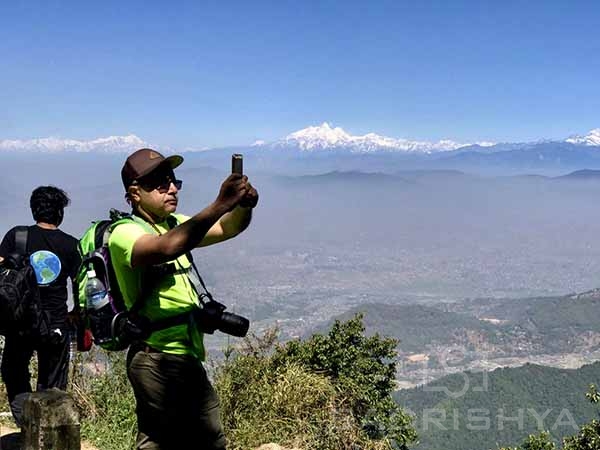LIKING HIKING

LIKING HIKING
 photo: Madhu Acharya
photo: Madhu Acharya
Phulchoki 2780m
Binod Bhattarai
Spending a few hours on the road once every couple of weeks can do magic of a different kind. It begins with the moment you put your backpack on the shoulder, tighten your boots and step out. For the entire day, your mind is filled with how to get to the destination and get back in one piece. The bright side of this is that everything you have in your head about pending work and deadlines, household chores and emails to respond or movies to watch are all washed out!
I’ve been trying to workout at least 3-4 days each week, and this has been going on for about 3-4 years. It’s a way of telling myself that I’m still alive, while also hoping to also lose some weight and flatten the 50-somthing bulge on the belly. I must admit I have not seen the belly get flatter as often as I would have wanted, and have many a time blamed the ‘faulty’ weighing machine at the gym of malfunctioning.
It took some time to realize that it was not the machine that was at fault and that it could be me who was not doing enough. Because as they say, muscles have memory or remember how to perform and if you’re on the same routine every day, they get used to doing things you want while also economizing on the calories burnt. (How much and what you eat that also factors into this equation but I’ll not talk about that here).
The slow change at the gym triggered the idea of trying out something and the obvious choice was hiking. I don’t know if it was hiking, or the eating habit, but now I realize that I might also have started becoming lighter. The credit for this also goes to us — a couple of friends and I — who began hiking once a fortnight some two months ago.
Phulchoki in southern Lalitpur was my fifth outing. The last time I had visited the hill was as a student in 1982/83 when we had spent a night camping after a snowfall. We had walked up then, but I had forgotten about it until yesterday (9-4-2017), when I was there for the second time.
The trip began with a microbus ride from Lagankhel at 7:00 am. As with micros, the bus with room to roughly seat 15 people or less, comfortably, began the journey with 19 before taking in another four at Satdobato. The ride was an experience in itself with a pane-less window and wind and dust hitting my face for 30 minutes! But the fact that I had a seat to sit on was a consolation.
Things changed the moment we got off the bus and headed into the woods. You could feel your lungs being cleansed by the every breath of fresh air you inhaled, making the uphill hike as easy as it could be. The path winds around the jungle for about 12 km before reaching the peak.
Overall, it was a climb from roughly 4850 feet at the Godawari bus stop to a maximum altitude of about 9000 feet. Here’s what the hike tracker on the mobile had to say at the end of the trip: Total distance covered 14.11 miles; duration 7.30 hours, calories 3923 kcal, and an average speed of 1.9 miles per hour. Let the pictures tell the rest of the story.

















